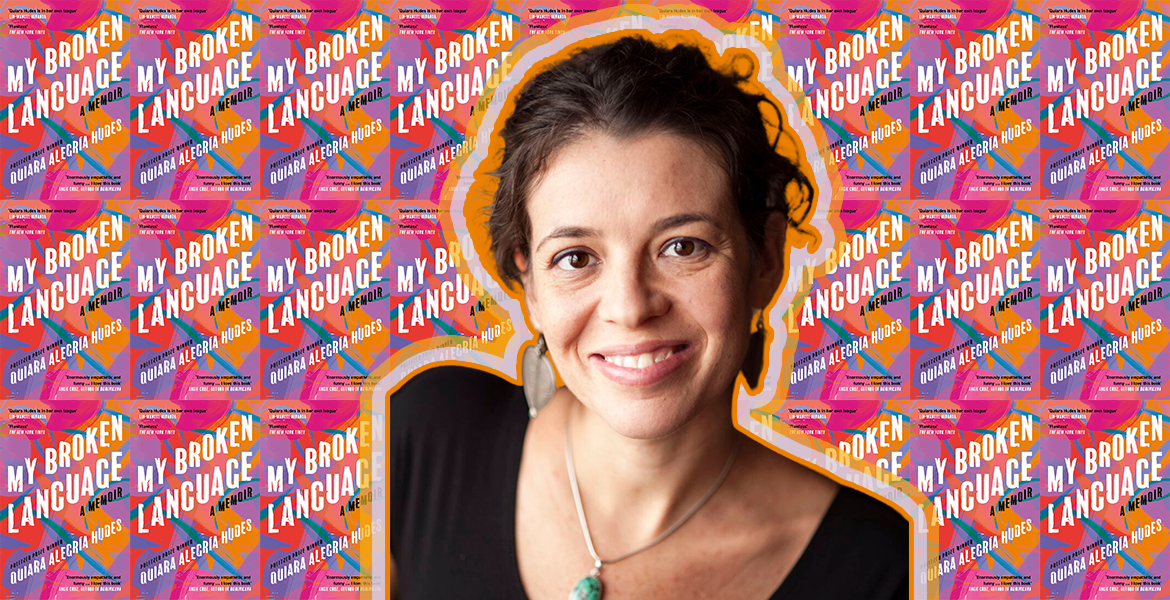Wandering down the aisles of City Lights Booksellers & Publishers on a random weekend trip to San Francisco, I happened upon the book My Broken Language by Quiara Alegría Hudes. Intrigued by the back cover, which promised a “multimythic dive into home, memory, and belonging,” I figured I would take a chance on reading a memoir instead of a fiction book this time. Since finishing it, not a day goes by that I don’t think about My Broken Language, and I recommend it to anyone who asks me what they should read next.
You might know Hudes from her playwriting with credits like her Pulitzer Prize-winning play Water by the Spoonful or the Tony Award-winning musical In the Heights, which she collaborated on with Lin Manuel Miranda. In her memoir, My Broken Language, she shares a deeply personal account of growing up caught between two worlds: the Puerto Rican barrio of North Philly where her mother lived vs her Jewish father’s rural life in West Philadelphia.
As a Cuban American writer and filmmaker myself, I am passionate about bringing more Latina representation to the screen, and the stories I tell work to do just that. While I’ve searched for examples of myself in media and literature, My Broken Language is really the first time that I saw myself in a piece of work.
Her language is expressed through the way that the women in her family would dance, her mother’s household shrines, and the front stoops of the homes of her relatives.
Sophia Costanzo
My mom’s side of the family is Cuban, while my dad’s is Italian. I wasn’t around my dad’s side growing up, and my Italian influence came from the recipes he’d make, my lighter features, the shape of my eyebrows, and my full name, which marks me as Italian pretty quickly. Meanwhile, my older sister looks the exact opposite, to the point where we were once asked if I was adopted. Her dark features and tanner skin make her fit in quite well with the Cuban side of my family, who we spent the most time with growing up.
Every day, my abuela would take us to school. After school, she’d take us to her house – the only house on her street in Los Angeles that always smelled like ropa vieja when you hit the front door – and we’d have snacks while she told us stories of her life in Havana, Cuba. She is the reason that my sister and I both became writers and storytellers, and also the reason that we are both proud Cuban Americans.
So when I went to college in Indiana and left my family’s home of Los Angeles, I found myself often defending my identity. I got a lot of questions about my Cuban background and some people told me I didn’t even look Cuban. Sometimes I felt like I wasn’t Cuban enough, and other times I felt like I was too Cuban. It was hard to go from spending every day at my grandparent’s house – a house we called Little Havana – to being told that I wasn’t enough because of some makeup of my DNA. For the first time, I was really wrestling with how to explain who I was and what being Cuban meant to me.
My language is the yellow tint our fingers get after cooking with Sazón con azafran, the palm trees in front of our houses, and the holy water kept in every room.
Sophia Costanzo
There was a comfort in reading this book and understanding that I wasn’t alone in trying to balance two very different worlds inside me. Hudes’s own struggle with understanding the nuances of the Spanish language in her community resembles a similar struggle to my own. We both have to deal with what it means to not quite look like the group you culturally can relate to the most. What it means to take up that space and not do wrong by it. I could relate to the challenges of leaving my family to go to a college in another state, and how that could be good for me while also making me homesick. I too yearned to bring back home what I had learned there.
The influences of the strong Latina women in Hudes’s family helped her to become a storyteller, just like I had, but she couldn’t authentically share their untold stories until she defined for herself what her language would be. Not just picking between English or Spanish, her language is expressed through the way that the women in her family would dance, her mother’s household shrines, and the front stoops of the homes of her relatives. My language is the yellow tint our fingers get after cooking with Sazón con azafran, the palm trees in front of our houses, and the holy water kept in every room. Our languages aren’t broken, and they aren’t just words – they’re our own.
Hudes’s story is a testament to the complexities of identity, belonging, and the power of storytelling. For mixed Latinas like me, Hudes’ memoir is a safe haven and a reminder that we are not alone in our search for who we are and where we belong.

